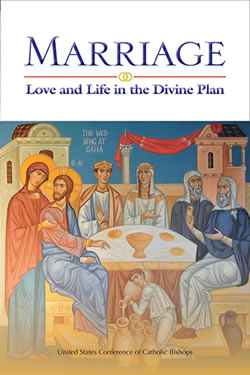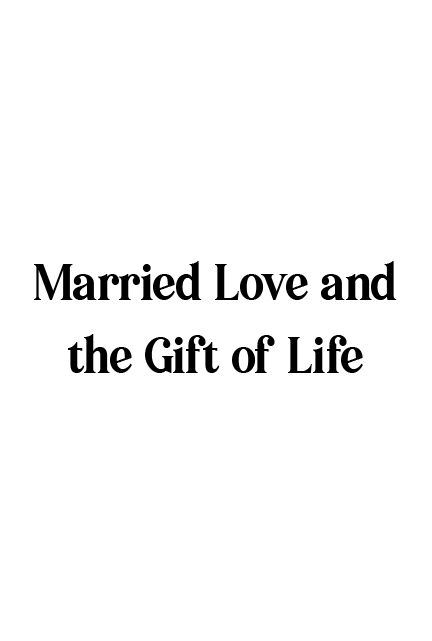Page Summary
- Apart from the “transactional” and “romantic” views of marriage, a third view is possible: the “unitive” view.
- Marriage doesn’t unite us to conditions, attributes, or feelings. It unites us to a person.
- The union endures even if the spouses have exaggerated expectations that aren’t met.
- Recognizing their inability to bring infinite fulfillment actually equips spouses to love each other better.
Is marriage a real union or is it only a social contract?
Marriage is a real union.
Ok, but what does that actually mean?
Listen to this article
Wasn’t marriage just a contract for most of recorded history?
In different eras, the recognition of marriage has taken on a “transactional” view, leaving little room for love. Women, who were prevented from being self-sufficient, sought material security from men, who in turn sought family connections, domestic upkeep, or comfort. Where this dynamic held sway, husbands treated wives as property. Even when they didn’t, “marriages of convenience” were still commonplace. These practices are still widespread in many places.


The “transactional” view of marriage

The “transactional” view of marriage allows for the possibility of separating if either person stops holding up one side of the transaction.
Some think that this practice is the true expression of marriage, and therefore it does not have intrinsic value. For them, the “romantic” view of marriage only arose with the medieval chivalric tradition, which invented sentimental notions of love that sell fairy tales even in our own day.
Jesus’s words to the Pharisees, however, show that a different understanding of marriage is deeply rooted in human history:
“Have you not read that from the beginning the Creator ‘made them male and female’ and said, ‘For this reason a man shall leave his father and mother and be joined to his wife, and the two shall become one flesh’? So they are no longer two, but one flesh. Therefore, what God has joined together, no human being must separate.”
-Matthew 19:4-6
Agree or disagree with his argumentation, but it at least demonstrates that this understanding of marriage has existed since ancient times, belonging to neither the “transactional” nor the “romantic” school. Even if those views might have been more popular at one time or another, Jesus’s view has always been a possibility.
If marriage is just a transaction, the goal would be better accomplished by an agreed-upon set of specific tasks. In that case, Dave might be justified in quitting his “job”.
If marriage conformed to the purely “romantic” view, and the passion became a casualty of the cancer treatment, the basis for the relationship would break down. There too, Dave might be justified in leaving Danielle.

…by virtue of the covenant of married life, the man and woman ‘are no longer two but one flesh’ and they are called to grow continually in their communion through day-to-day fidelity to their marriage promise of total mutual self-giving.
St. John Paul II, Familiaris Consortio 19

The “romantic” view of marriage

The “romantic” view of marriage also allows for the possibility of separating if either person stops feeling whatever emotions served as the basis of the relationship.
Of course, he’s not justified in leaving his wife, because marriage means something more. Dave didn’t marry Danielle because she would fulfill her end of the transaction or because of how she made him feel. He didn’t marry her only because she looked a certain way, because she laughed at his jokes, or even because she was a member of the opposite sex (which is necessary, but not sufficient). Those factors can all exist apart from marriage. He didn’t marry her so he could be united to any of those factors. He did it so he could be united to her.
The “unitive” view of marriage articulated by Jesus of Nazareth.

Once the spouses are joined, neither the transactional nor the romantic view’s sort of separation is possible.
This union endures even if Dave ceases to get in return from Danielle what he hoped (and vice versa). Resentment from disappointed expectations is a significant cause of spousal abuse. It would be bad enough if the wife was the only victim (whose reports are often not taken seriously), but abuse also violates the marriage itself.
When the spouses enter into marriage by giving their consent, they consent to love each other regardless of expectations (which can be so exaggerated that they become idolatry). Infinite fulfillment is something only God can give, so it’s unfair to expect it of any human being. Recognizing this actually equips spouses to love each other better than if they held onto the exaggerated expectations. Then they can be more fully united to each other.
Dave can accompany Danielle in the sufferings that follow her diagnosis, fulfilling the promise he made on their wedding day to love her “for better, for worse, for richer, for poorer, in sickness, and in health” until death. This is what it means to be a husband or a wife: to choose the good of the other over self-interest, to be one, whatever the case may be. That’s marriage.

For this reason, with a heart filled with gratitude and hope, I would remind all married couples that marriage is not an ideal but the measure of true love between a man and a woman: a love that is total, faithful and fruitful (cf. St. Paul VI, Humanae Vitae, 9). This love makes you one flesh and enables you, in the image of God, to bestow the gift of life.
Pope Leo XIV, homily from June 1, 2025
1) Glantz, Michael, Marc C. Chamberlain, Qin Liu, Chung Cheng Hsieh, Keith R. Edwards, Alixis Van Horn, and Lawrence D. Recht. “Gender Disparity in the Rate of Partner Abandonment in Patients with Serious Medical Illness.” Cancer 115, no. 22 (November 3, 2009): 5237–42. https://doi.org/10.1002/cncr.24577.








